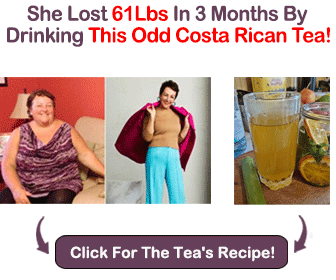The diet is rich in steamed rice, noodles, fish, tofu, natto, seaweed, and fresh, cooked, or pickled fruits and vegetables but low in added sugars and fats. It may also contain some eggs, dairy, or meat, although these typically make up a small part of the diet.
Is Japanese diet the healthiest?
The traditional Japanese diet is considered one of the healthiest diets in the world. The Japanese pride themselves in having one of the lowest rates of obesity in the world, as well as low incidences of certain hormone-dependent cancers. Usually, the Japanese eat three large meals and two snacks each day.
What do Japanese eat that keeps them slim?
Rice as their number one source of carbohydrate
While Japanese people eat rice daily. It is an essential food for most of their meals. Plus, it is cooked without butter or salt, so Japanese people are able to keep their slim figures.
How many meals do Japanese eat a day?
Of the 95% of Japanese that eat three meals a day, most people consider dinner to be the most important.
What is a typical Japanese diet? – Related Questions
How often do Japanese eat eggs?
According to the International Egg Commission (IEC) (1), Japan is second only to Mexico in the number of eggs consumed per capita per year; according to data from 2020, 340 eggs per capita per year are consumed. It means that Japanese consumers eat eggs almost every day.
What do Japanese eat for breakfast?
Traditional Japanese breakfast usually follows the style of a Japanese set meal, with the staple being rice and miso soup and ohitashi (boiled vegetables) served as side dishes. Natto (fermented soybeans), pickles, and grilled fish are often also served on the side to help complement the rice.
What country eats the most meals a day?
People in France tend to spend the most time eating and drinking per day on average at 2 hours and 13 minutes. Their neighbors in Italy and Spain aren’t too far behind, averaging more than two hours per day.
How many meals a day did samurai eat?
Samurai had 2 meals a day, 8 hours of sleep every day. Especially, natural diet was a very important aspect of Samurai’s life. Eating healthy was necessary to maintain their body to fight well in the battle fields. Their diet consisted mainly of brown rice, miso soup, fish and fresh vegetables.
How many meals a day do Asians eat?
Most Chinese people (94%) have three meals a day, while 5% have two meals a day. However, the situation varies from urban to rural area.
How often do Japanese people go out to eat?
In a survey conducted in November 2021 in Japan, 31.6 percent of people stated to dine out on average about once a week.
What is considered rude in Japan?
Pointing at people or things is considered rude in Japan. Instead of using a finger to point at something, the Japanese use a hand to gently wave at what they would like to indicate. When referring to themselves, people will use their forefinger to touch their nose instead of pointing at themselves.
What is considered rude while eating in Japan?
When eating from shared dishes (as it is commonly done at some restaurants such as izakaya), it is polite to use the opposite end of your chopsticks or dedicated serving chopsticks for moving food. Blowing your nose at the table, burping and audible munching are considered bad manners in Japan.
Is it rude to finish your food in Japan?
Not finishing one’s meal is not considered impolite in Japan, but rather is taken as a signal to the host that one does not wish to be served another helping. Conversely, finishing one’s meal completely, especially the rice, indicates that one is satisfied and therefore does not wish to be served any more.
Is it rude to hug in Japan?
Best not greet a Japanese person by kissing or hugging them (unless you know them extremely well). While Westerners often kiss on the cheek by way of greeting, the Japanese are far more comfortable bowing or shaking hands. In addition, public displays of affection are not good manners.
Is it rude to use a spoon in Japan?
More Japanese Dining Etiquette Tips
Soup served in a small bowl, such as miso soup, which is typically served at the start of most Japanese meals, doesn’t need to be eaten using a spoon. Instead, you may bring the bowl close to your mouth and drink it.
Is it rude to chew noodles in Japan?
One of the first things you’ll hear in any discussion of Japanese table manners is that it’s customary, and even polite, to audibly slurp your noodles as you eat them. It doesn’t matter if it’s ramen, soba, or udon. Japanese-style noodles are meant to be slurped, with the sound showing that you’re enjoying the meal.
What foods are not eaten in Japan?
7 ‘Japanese’ Foods No One Eats in Japan
- California Rolls.
- Sweetened Green Tea.
- Teriyaki Sauce.
- Hibachi Restaurants.
- Spicy Fish Sushi Rolls.
- Sushi Sauces and Extra Ingredients.
What should you not say to a Japanese person?
Do not address other people using their first names. In Japan, you do not address other people by using their first names like how things usually are in the Western world. That is not considered polite, especially if you are talking to a superior, someone older than you, or someone you meet for the first time.
Is it rude to use a fork in Japan?
There are many western restaurants, aka family restaurants, in Japan that provide you with knives and forks. Of course, if you’re eating traditional Japanese cuisine, and you ask for a fork and knife, I’m not sure about rude, but it definitely is not common.
Is it rude to cross your legs in Japan?
Crossing your legs is considered very casual and improper even if you do your best to cross them tightly and stylishly. Instead, experience the “seiza,” an excruciating form of traditional Japanese sitting (on your knees), invented especially to torture foreigners.

